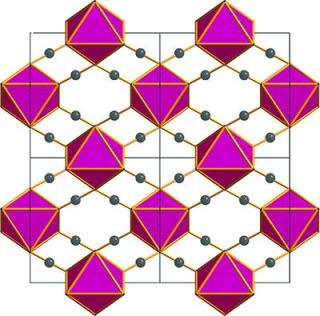Jun 12 2015
A team of researchers has shown that pressure provides a new way to produce novel phases and helps in investigating the links between structures and properties of molecular materials.
 This is a cobalt II octahedral packing diagram as viewed in the (001) plane. Credit Yakovenko et al
This is a cobalt II octahedral packing diagram as viewed in the (001) plane. Credit Yakovenko et al
A high-pressure crystallographic study of α-Co(dca)2 was performed, involving structural measurement of the high-pressure phase γ-Co(dca)2. They used synchrotron-based powder diffraction techniques to probe the pressure-dependence property of the atomic structure inside a diamond-anvil cell.
As a strong thermodynamic variable, pressure makes it possible to change the structure, reactivity, and bonding of matter. In fact, in materials science applications, pressure is integral in the search for new functional materials.
Crystallography not only helps in resolving the structural phenomena through proper understanding of interactions, but also gives an insight into the association between properties and structure. Material scientists can leverage pressure to study and alter the magnetic, electronic, vibrational, structural, and mechanical characteristics of materials in situ.
An increased amount of pressure results in a number of effects such as spin transitions, magnetic crossover, alterations in proton conductivity, negative linear compressibility, and also phase transitions, which produce porous structures. As a result, high-pressure crystallographic analyses of materials with thick framework are steadily increasing. When compared to purely organic compounds, coordination compounds are largely restricted to high-pressure crystallographic analyses. These are a unique group of materials that have more flexibility when reacting to pressures applied at a moderate level. This is because the geometry at the core of the metal can go through significant changes, while other major bond angles and distances are not considerably affected.
The research team, based at Argonne National Laboratory, will carry out another study, which will include analyses of pressure-based structures of more transition metal dicyanamides, in addition to other polymorphs and components of the iso-structural α-MII(dca)2 family, to discover metal-ion dependence or universality related to the transition of α→γ, or whether other novel phases can be possibly produced.